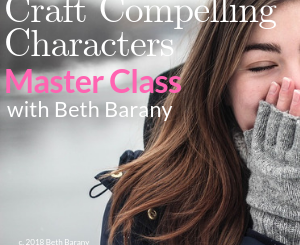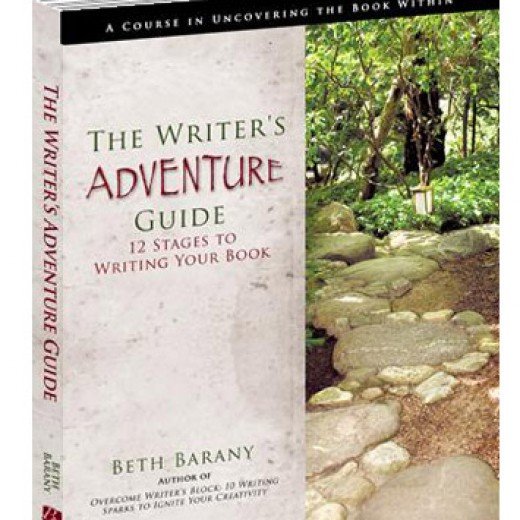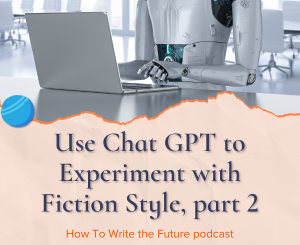Artist Entrepreneur: F for Follow-Up and Follow Through — The Artist’s Alphabet Guide to Writing About Your Art by Aletta de Wal
Welcome to Artist Entrepreneur Fridays, where we talk about the fun, wild and scary ride of succeeding as an artist entrepreneur of all stripes and types and mediums.
Welcome back guest columnist, Aletta de Wal. She specializes in helping visual artists succeed in their fine art careers. She’s posting regularly on “The Artist’s Alphabet Guide to Writing About Your Art” and other success tips for fine artists around writing. This week it’s about follow up and follow through — essential keys to business and artistic success. Enjoy!
***
When I go to outdoor art shows and gallery exhibits I always ask artists, “How is it going?”
The most common answer these days is “I’ve had a lot of traffic, but no sales,” or “Just a few card sales.” They are disappointed and look at me funny, when I say, “That’s great! How are you going to keep those people interested? If they did not buy today, they at least know what you have to offer.”
Assuming that people will buy right away is like expecting to get married after the first date. It happens, but rarely, and it doesn’t always lead to happily ever after — but I digress.
At the heart of your marketing is a series of conversations designed to build a bridge between you, your art and your audience. That’s the romance and dating part.
To get from marketing to sales, you have to nurture relationships with your audience until you convert spectators into buyers.
Relationships are the bedrock of sales. People buy from people they like, know and trust. This is the part where you live happily ever after, agree to be friends or part ways. This takes follow-up and follow-through. You pursue and explore the relationship thoroughly enough to arrive at an outcome that suits both parties.
Follow-up conversations create the foundation for relationships. Follow-up shows the person that you care, demonstrates that you listen and that you pay attention to what matters to them. This simple act creates good feelings — both in writing and receiving the note.
The Association of Sales Executives published a study that showed 80% of sales are made on the 5th to 12th contact. It takes time for people to make the decision that is right for them. Follow-up is the way to safeguard that they don’t abandon the journey prematurely.
Send your follow-up notes to potential clients and people in your marketing pipeline who have not yet purchased. What you write about varies for each group:
- When you write for potential viewers, write to your ideal audience and focus on giving them information about yourself, your services and what other clients say about you.
- When you write to people who have already have some idea of who you are and what you do, take your cues from what has already happened. Then continue the conversation from their point of view and lay out a possible path for you to work together.
I like to do my first follow-up within 24 – 48 hours of a networking meeting phone call, e-mail inquiry, web site visit, or blog post comment so that the person will recall the event. I get permission to continue the conversation and then I move into follow through mode.
Follow-through conversations move the relationship along. Trust takes time to develop, so take it slow and steady. Craft each message carefully and vary your message to suit the stage of the purchase cycle, the type of person, the type of purchase, and the size of the purchase. They may be interested in what you offer, but not yet ready to commit, need more time or more information to decide, or more money to pay you. Find out what is preventing them from taking the next step and come up with a way to help them resolve that, or to let them go and turn your attention to others.
Your patient persistence will convert exposure into sales or referrals, or recognition that there is not a fit for you to work together at this point.
Marketers tell us that it costs 5 to 8 times more to get a new customer than to keep an existing customer. Follow through on every promise to your clients. Get back in touch periodically to see how they are doing and before introducing something new that might benefit them.
Whether you are writing follow-ups or follow-through, remember to:
- Greet people by name
- Express a genuine thank you for past connections
- Describe the benefit to them of information that you provide
- State actions you will take
- Suggest actions you want them to take
- Close the communication with a word of appreciation
- Use a signature block so that it’s easy to continue the conversation
Here are some tips to schedule follow-up and follow-through and to keep your commitment to do so:
- Make follow-up a habit and be systematic about scheduling it in advance
- Draft basic follow-up letters before you need them. When you send them, customize them to include something personal and specific so it doesn’t look canned
- Schedule follow up date in advance
- Have a follow-up system, e.g. spreadsheet and/or reminders on your calendar to keep track of name, contact information, contact method, and results.
- Be persistent but not insistent. Decide how many times to follow-up and do so. Watch the pace and frequency. Enough to give them time to act but not too much so they forget about you.
- Keep the thread of the conversation going with summaries of what has happened, links to past posts and excerpts of e-mails or letters.
- Offer added value — something extra, e.g. I send links to topics you’ve discussed with clients, or an appealing “next-step-offer” to keep the conversation going.
- Require minimal work on part of the recipient to respond to you.
Finally, you can use follow-up and follow-through even in situations where it may seem futile, like a complaint. Here’s an example of a response to a follow-up that reminds me to always look for the silver lining in any cloud:
“I just want to thank you for being so prompt in sending me the book I ordered. Your follow-up call to make sure I had the right shipping down, and to make sure I knew that you had my order, (after I had emailed to “complain” that an invoice never showed up on my computer!) was amazingly personal service. I received the book yesterday … it’s wonderful! I am so glad I “happened” upon the Artist Career Training web site…. and so excited about the future!”
Next time, G for Grants.
Aletta de Wal, Artist Career Training
Aletta de Wal inspires fine artists to make a better living making art in any economy.
Aletta works with part-time, emerging and full-time visual artists who are serious about a career in fine arts. Aletta makes make art marketing easier and the business of art simpler.
More information at: http://www.artistcareertraining.com/artmatters-newsletter/









What an inspirational and helpful post. I think the advice is great and clearly listed. I especially like how you mentioned that expecting our work to sell right away is like expecting to get married after the first date. Well said!
Thanks for sharing.
~Jess
http://thesecretdmsfilesoffairdaymorrow.blogspot.com/
Hi Jess,
Thanks for your acknowledgements about the post. It took me some time to come to clearly define the difference between the two. I wanted to express it in a way that artist can take action a step at a time.
I visited your Blog this morning. LOVE the tress and red shoes.
Happy Saturday to you.
Aletta